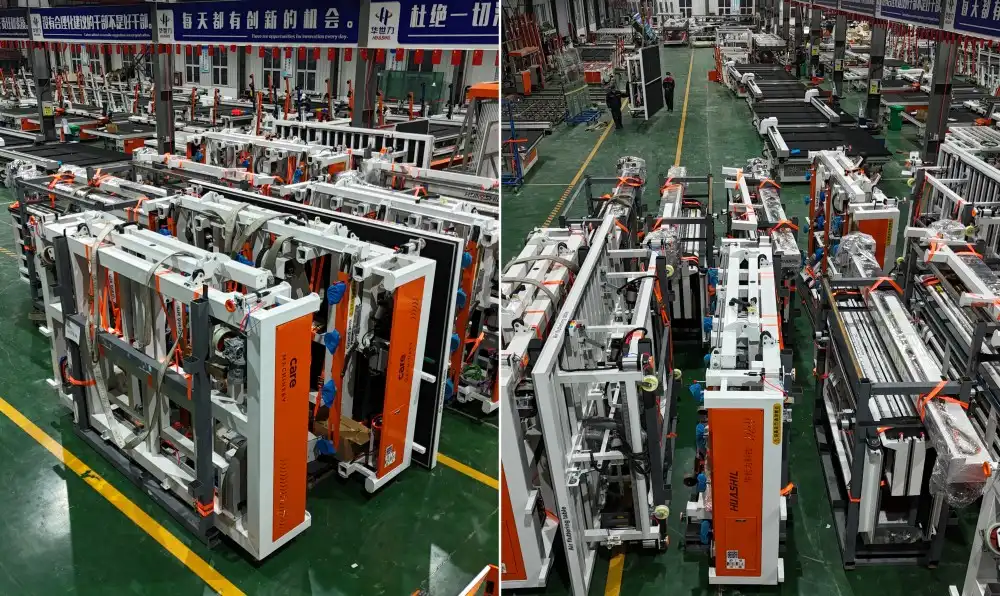Glass cutting machines have revolutionized the way we work with glass in various industries. From architectural applications to automotive manufacturing, these machines have become indispensable tools. However, when it comes to tempered glass, the question arises: can a cutting machine for glass effectively cut this specialized type of glass? Let's delve into this topic and explore the intricacies of working with tempered glass.
Understanding tempered glass properties and challenges
Tempered glass, also known as toughened glass, is a type of safety glass that has undergone a special heat treatment process using cutting machine for glass. This process significantly alters the glass's physical and chemical properties, making it much stronger and more resistant to breakage than regular glass. When tempered glass does break, it shatters into small, relatively harmless pieces rather than large, jagged shards.
The unique properties of tempered glass present several challenges when it comes to cutting:
- Increased hardness: The tempering process makes the glass surface much harder, which can cause standard cutting tools to slip or become ineffective.
- Internal stress: Tempered glass has high internal stress, which can cause it to shatter spontaneously if the surface is scratched or cut.
- Thermal sensitivity: The heat generated during cutting can potentially trigger the glass to break due to thermal shock.
These factors make it extremely difficult, if not impossible, for conventional cutting machine for glass to cut tempered glass effectively. Standard glass cutting techniques, such as score-and-break methods, are not suitable for tempered glass due to its unique properties.

Specialized techniques for cutting tempered glass
While conventional cutting methods are ineffective, there are specialized techniques and equipment that can be used to cut tempered glass under certain circumstances:
Laser cutting
Advanced laser cutting technology has demonstrated significant potential in precisely cutting tempered glass using cutting machine for glass without causing breakage. This technique uses a focused, high-powered laser beam that melts or vaporizes the glass along the desired cutting path, minimizing mechanical stress. Despite its precision, laser cutting equipment is costly and requires highly skilled operators for safe and effective use. Due to these factors, laser cutting is generally limited to specialized industrial settings with specific production needs.
Water jet cutting
Water jet cutting machine for glass employ a high-pressure stream of water combined with abrasive particles to carefully slice through tempered glass. This cold-cutting method helps avoid thermal stresses that could cause cracking or shattering. While effective, it demands specialized, high-pressure equipment and skilled operators to maintain precise control and prevent damage during the cutting process. Water jet cutting is typically used in industries requiring intricate cuts where conventional methods are not feasible.
Annealing and re-tempering
In some cases, tempered glass can be annealed (heated and cooled slowly) to remove the internal stresses, cut using conventional methods, and then re-tempered. This process is time-consuming and may not be practical for all applications.
It's important to note that these specialized techniques are not widely available and may not be suitable for all types of tempered glass or all applications. In many cases, working with pre-cut tempered glass or finding alternatives to cutting machine for glass may be more practical and cost-effective.
Alternatives to cutting: working with tempered glass
Given the challenges associated with cutting tempered glass, many industries opt for alternative approaches:
Pre-cut tempered glass
A common and practical solution is to order tempered glass that has already been cut to precise dimensions using cutting machine for glass prior to the tempering process. This method ensures the glass retains its full strength and safety properties since cutting after tempering is not required. By specifying exact sizes in advance, manufacturers can avoid the risks of breakage and achieve consistent quality, making pre-cut tempered glass a reliable choice for many commercial and residential projects.
Laminated glass
Laminated glass serves as a versatile alternative to tempered glass in situations where cutting or shaping is necessary after production. Comprising multiple glass layers bonded with interlayers such as polyvinyl butyral (PVB) or ethylene-vinyl acetate (EVA), laminated glass combines enhanced safety and durability. Unlike tempered glass, it can be cut or drilled using conventional cutting machine for glass, providing greater flexibility for custom designs without compromising structural integrity.

Edge polishing and drilling
Although cutting tempered glass is highly challenging, certain modifications remain feasible. Edge polishing techniques can smooth and refine rough or sharp edges to improve both aesthetics and safety. Additionally, specialized drilling methods using diamond-tipped cutting machine for glass enable the creation of precise holes for hardware fittings and mounting. These controlled processes minimize stress and reduce the likelihood of cracking, allowing functional enhancements without compromising the glass’s inherent strength.
Custom fabrication
For projects requiring complex shapes or sizes that cannot be achieved with standard dimensions, partnering with glass manufacturers for custom fabrication is an effective alternative. This collaborative process allows for tempered glass pieces to be produced according to detailed specifications, eliminating the need for any post-tempering cutting. Custom fabrication provides design flexibility and ensures the finished product meets both safety standards and aesthetic requirements in specialized architectural or industrial applications.
Conclusion
While conventional cutting machine for glass is not suitable for cutting tempered glass, there are specialized techniques and alternative approaches available. The choice of method depends on the specific requirements of the project, budget constraints, and available resources.
For those in the glass industry seeking cutting-edge solutions for glass processing, Shandong Huashil Automation Technology Co., LTD offers a range of advanced glass cutting machines and automation solutions. With years of experience in production and export, our company provides high-quality equipment that meets the diverse needs of the architectural, automotive, and decorative glass sectors.
If you're looking for innovative glass processing solutions or have questions about our products, don't hesitate to reach out. Contact our team of experts at salescathy@sdhuashil.com to discuss how we can help optimize your glass production processes.
References
1. Johnson, A. (2022). The Science of Tempered Glass: Properties and Applications. Journal of Glass Technology, 45(3), 112-128.
2. Smith, B., & Brown, C. (2023). Advanced Techniques in Glass Cutting: Challenges and Solutions. International Glass Processing Review, 18(2), 75-89.
3. Zhang, L., et al. (2021). Laser Cutting of Tempered Glass: A Comprehensive Study. Journal of Manufacturing Science and Engineering, 143(8), 081001.
4. Anderson, R. (2023). Alternatives to Cutting Tempered Glass in Modern Architecture. Architectural Glass Quarterly, 37(4), 210-225.



